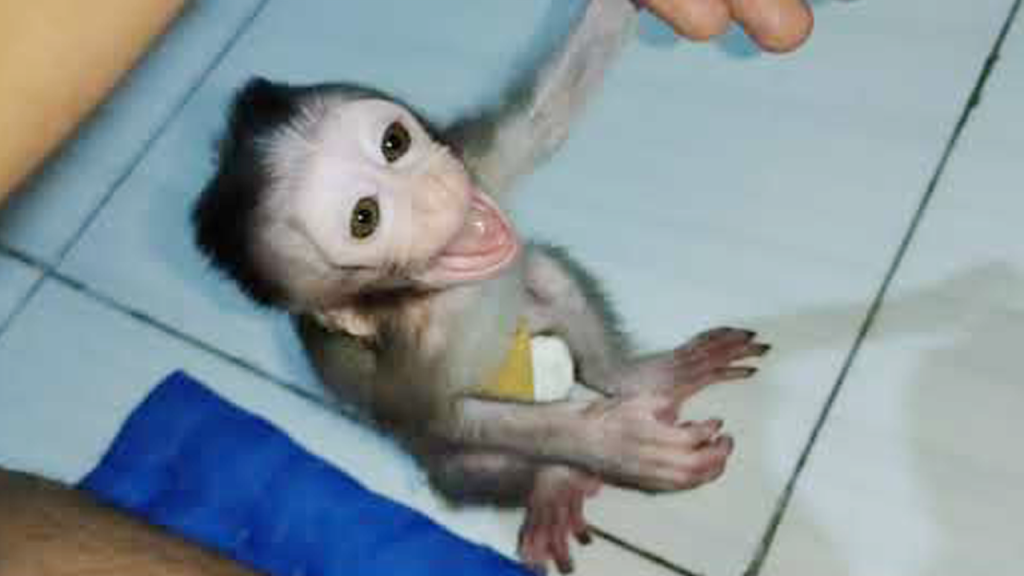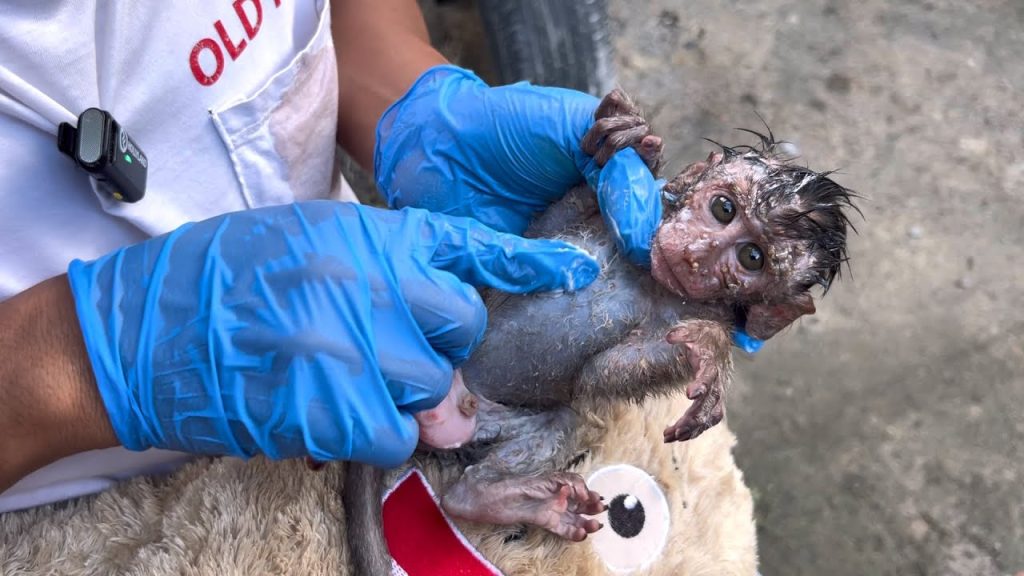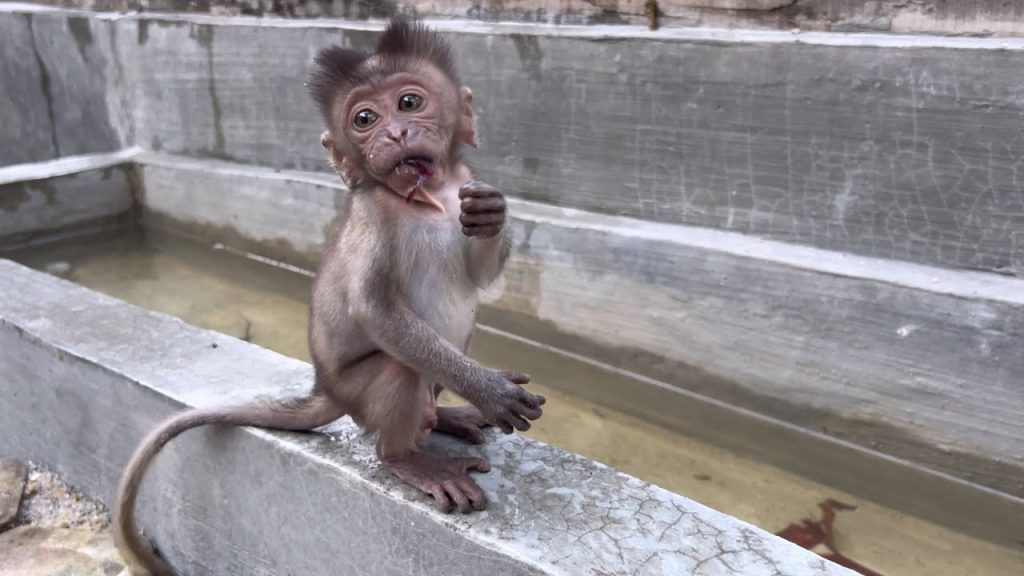
A baby monkey’s tantrum is not random noise or “bad attitude” — it is an emotional overflow from a tiny nervous system that has not yet learned how to manage disappointment or sudden frustration. When the baby wants something — a bottle, a specific toy, a climbing spot, a certain human’s attention — the brain forms a quick expectation, almost like a picture. If reality does not match that expectation, the body reacts immediately: fists clench, face scrunches, eyes narrow, and the voice becomes sharp or high-pitched. To adults this looks exaggerated, like drama. But to the baby, it feels like survival. Young primates are not faking their anger — they genuinely believe in that moment that something important has been taken away.
What makes baby monkey tantrums intense is that they have no middle gear. There is no “mild” reaction. Their emotions are like switches: all or nothing. They have not yet built the neural pathways that allow for patience, delayed gratification, or interpretation of another individual’s intentions. So when they cannot have what they want, sadness immediately bleeds into anger. This is not manipulation; this is developmental reality.
Even in the wild, young monkeys show bursts of frustration when they cannot cling where they want, cannot get mother’s attention fast enough, or lose access to a desired food piece. The difference in human care is only the environment — not the emotion. The tantrum is a natural part of learning boundaries.
Over time, as the baby grows stronger, gains more control over movement, understands routines, and begins trusting that needs will be met again later, the tantrums usually become shorter and less intense. What we witness right now — the “mad baby monkey moment” — is the raw beginning of emotional regulation. It is dramatic because emotion is still louder than logic. It is loud because communication is still primitive. And it is honest, because baby monkeys do not pretend — they simply react.


